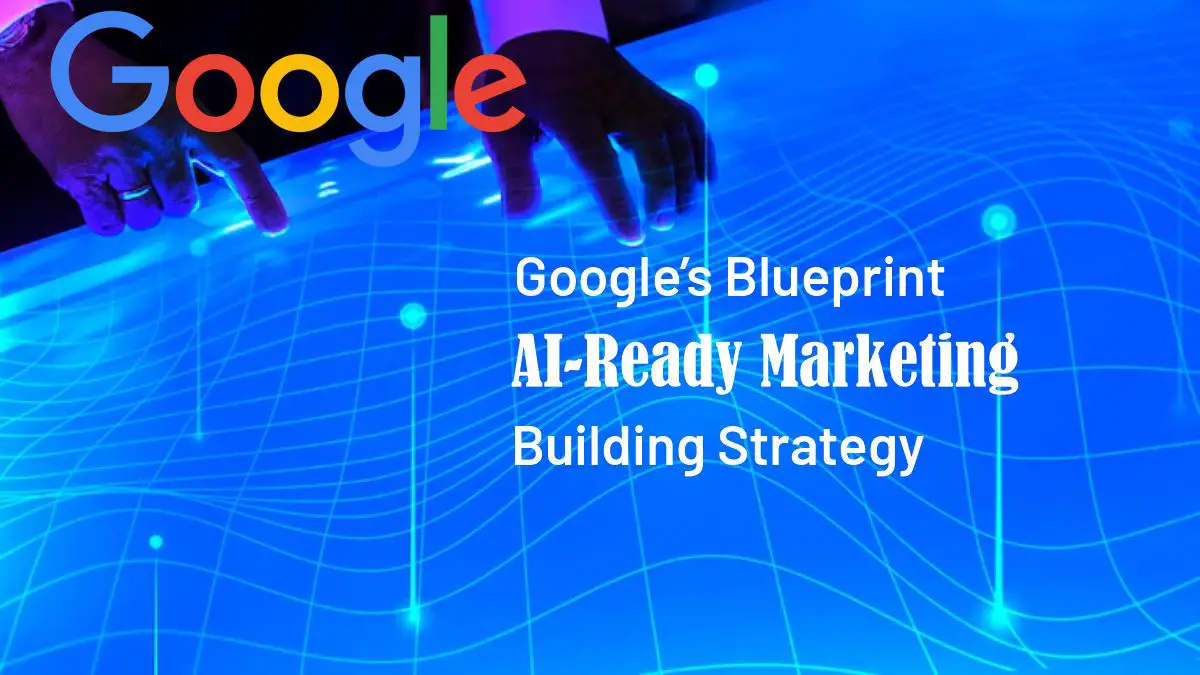As the marketing world rapidly evolves, the key to unlocking AI-powered performance lies not in adopting every new tool—but in mastering what you already have. According to Google, marketers who activate high-quality first-party data for AI workflows can see performance improvements of up to 30%. But that kind of uplift doesn’t happen by accident. It’s the result of a disciplined approach to data quality, privacy compliance, and smart integration across your marketing stack.
The biggest breakthrough isn’t about acquiring futuristic AI tools—it’s about activating your existing assets (especially first-party data) across your measurement and audience strategies to fuel AI’s potential. This is especially crucial as the digital ecosystem shifts away from third-party tracking.

Why Marketers Must Adapt—Fast
We’re entering a new era of digital marketing where third-party cookies are vanishing, privacy regulations are tightening, and platforms like Chrome and iOS are prioritizing consumer data protection. For marketers, this means a critical loss of behavioral signals once used for audience targeting, personalization, and attribution.
AI cannot function effectively without the right signals. If your current systems rely on outdated tracking or fragmented attribution models, your performance will likely decline. Google urges marketers to act now—to rebuild their data infrastructure with privacy-first AI enablement at its core.
This guide unpacks Google’s recommended strategies to ensure your Google Ads, Google Analytics 4 (GA4), and conversion tools are not only compliant but optimized for real-time AI performance.
🔧 1. Build a Privacy-First, AI-Ready Data Infrastructure
AI doesn’t just run on algorithms—it runs on trustworthy, consented, and connected data. That’s why your measurement foundation must be airtight. Google stresses that setting up robust, consent-aware tagging and data flows is the starting point for any AI-driven marketing system.
How to Build the Right Infrastructure:
✅ Implement Google Tag or Google Tag Manager
Use the Google tag across all pages and domains to ensure consistent, meaningful behavioral data collection. This includes events like page views, form submissions, and product interactions. Tag Manager simplifies the process and ensures consistency without needing constant dev support.
✅ Enable Google Consent Mode
Respect user preferences while maintaining measurement capabilities. Consent Mode dynamically adjusts how your tags behave based on whether users consent to cookies. Even when consent is denied, Google uses modeled data to reconstruct conversion paths using privacy-safe methods.
✅ Connect Google Ads + Google Analytics
This integration allows your bidding algorithms to react in real time to actual user behavior. If you’re using GA4 subproperties or roll-up properties, ensure that these are fully synced with your Google Ads account. This creates a full-funnel view of the user journey and unlocks smarter bid strategies.
✅ Enable Enhanced Conversions
Enhanced conversions use hashed first-party data, like email addresses or phone numbers, to match users across platforms. It improves conversion tracking across devices and channels and powers features like Customer Match, audience expansion, and accurate attribution.
📏 2. Rethink Measurement & Attribution in a Privacy-Driven World
With fewer observable touchpoints, many marketers struggle with incomplete or inaccurate measurement. But as Google notes, AI can help bridge these gaps—if your attribution model is designed for today’s privacy standards.
Key Steps for Accurate Measurement:
🔗 Use Cross-Domain Tracking in GA4
If your site redirects users between different domains (e.g., a booking engine or a separate checkout), failing to implement cross-domain linking in GA4 will result in broken sessions and misattributed conversions.
🎯 Import GA4 Conversions into Google Ads
Rather than relying on legacy goals, define high-value events in GA4—such as product adds, purchases, and sign-ups—and import them into Google Ads. This ensures your bidding strategy is optimized for true business outcomes.
🔍 Audit Your Measurement Tools
For enterprise advertisers using Campaign Manager 360, Search Ads 360, or Display & Video 360, ensure that every tracked event aligns with current marketing objectives. Update or disable outdated conversion tags, switch attribution models where necessary, and verify domain coverage.
🧾 Use MatchID for Offline Conversions
In cases where a conversion happens offline—like after a sales call or an in-person visit—MatchID allows you to securely upload and match those events back to the original ad touchpoint using hashed identifiers. This is crucial for B2B and high-touch B2C models with longer sales cycles.
🧠 Embrace Modeled Attribution & Privacy Sandbox
Google is pushing adoption of Privacy Sandbox APIs and modeled conversion techniques. These innovations allow for accurate, privacy-safe measurement in the absence of third-party cookies—without compromising on campaign insights.
🎯 3. Engage the Right Audiences Using First-Party Data + AI
Once you’ve built your infrastructure and validated your measurement stack, the final piece is activation—using AI to reach the right people, in the right moment, on the right platform.
Google recommends shifting away from rigid audience lists and static segmentation. Instead, let AI learn from first-party behavioral data and use that insight to predict and scale targeting.
How to Maximize AI-Driven Audience Targeting:
👥 Use Customer Match
Upload your CRM lists—emails, phone numbers, or user IDs—to Customer Match. This allows you to reconnect with past customers, subscribers, or high-intent leads across Search, YouTube, Gmail, and Display. These audiences are warm, familiar with your brand, and more likely to convert.
🧠 Use Optimized Targeting & Performance Max
Optimized Targeting in Display campaigns leverages AI to reach lookalike users beyond your defined audience segments. Performance Max campaigns take this even further by letting Google optimize across its entire ecosystem—search, display, shopping, YouTube, and discovery—in one campaign, driven by your conversion goals and creative assets.
📊 Export GA4 Audiences to Google Ads
Leverage GA4’s deep behavioral data to create custom audiences based on site actions (e.g., visited a product page, abandoned a cart, completed a form). Export these audiences to Google Ads for tailored retargeting and sequential messaging.
🔁 Activate Google-Engaged Audiences
These are users who engaged with your business via Google platforms—such as clicking an ad, interacting with a listing, or engaging on YouTube. Targeting this cohort helps ensure continuity across multi-channel journeys.
🔐 Explore PAIR (Publisher Advertiser Identity Reconciliation)
PAIR is Google’s latest identity solution for the cookieless era. It enables privacy-safe targeting by matching encrypted identifiers between publishers and advertisers. This ensures premium reach on trusted publisher sites without compromising user privacy.
🚀 The Strategic Takeaway: AI Needs Strong Fundamentals to Thrive
AI in marketing isn’t some distant capability. It’s already embedded in bidding strategies, audience expansion, creative optimization, and attribution modeling. But the power of AI only becomes visible when it’s fed accurate, privacy-compliant, and connected data.
Google’s Three-Layer Framework for Success:
| Layer | Focus | Why It Matters |
|---|---|---|
| Build | Consent Mode, tagging, enhanced conversions | Ensures the AI has clean, usable signals while respecting privacy |
| Measure | Cross-domain linking, modeled attribution, conversion accuracy | Delivers performance insights even when full user-level data isn’t available |
| Engage | Customer Match, Performance Max, GA4 audiences | Powers relevant ad delivery, personalization, and remarketing at scale |
Marketing teams that treat these steps as afterthoughts will likely struggle to scale their campaigns. But those who see them as intentional building blocks of a privacy-first, AI-powered strategy will have a significant competitive edge.
📚 Final Thoughts: Prepare Now for the Future of Marketing
Google has built the tools to support this new marketing paradigm. But to fully benefit, your organization needs to align data, measurement, and engagement strategies around AI-readiness and user privacy.
Success in the age of AI isn’t just about advanced algorithms—it’s about how well you prepare the data infrastructure, attribution system, and targeting approach that feed them.
Want to go deeper? Explore Google’s Executive Growth Guide for AI Marketing, and consider this your roadmap to sustainable performance in the cookieless, AI-first era.

